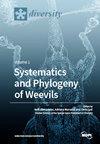Diversity of Indicator and Dominant Plant Species along Elevation Gradients in Prince Mohammad Bin Salman Nature Reserve, KSA
IF 2.1
3区 生物学
Q2 BIODIVERSITY CONSERVATION
引用次数: 0
Abstract
It is essential to protect and preserve biodiversity, especially in habitats in which natural resources are scarce. The differing flora and vegetation distribution on the broad, arid landscape at the Crown Prince Mohammed Bin Salman Nature Reserve has yet to be investigated. Based on GPS coordination and the transitional zone of plant communities, 48 symmetric plots of 50 × 50 m2 were distributed evenly over six elevations. In this study, we recorded 70 species in 33 families and elucidated floristic traits correlated with elevation. High species richness was recorded for the families Fabaceae, Poaceae, Asteraceae, and Chenopodiaceae. High numbers of chamaephyte and phanerophyte species were observed. In the chorotype, the mono-regional component contained 47% of the species, the bi-regional component 35.7%, and multi-regional and worldwide species comprised 10% and 7%, respectively. This study noted the growth habits of 23 herbs, 15 shrubs, 10 trees, and a single species of grass, vine, climber, and mistletoe. Diversity indices, indicator species, dominant plant communities, and soil profiles were compared for the defined zones of elevation. Alpha and beta diversity were high at elevations of ≥1000, 800, and ≤100 ma.s.l., compared to elevations of 600 m, 400 m, and 200 m. The highest species richness and species turnover were recorded at elevations of ≥1000, 800, and ≤100 m, while species evenness was greater at elevations of 600, 400, and 200 m. Vegetation analyses and indicator species (based on relative abundance) showed species variation with elevation. Species domination was influenced by physical soil structure and soil chemistry. Microclimates, including temperature and relative humidity variations, were found to be a significant driver in the ecosystem, resulting in varying plant diversity and species distribution at different elevations. Through canonical correspondence analysis (CCA), we used an autocorrelation of elevations, plant species, and soil properties to identify three phytogeographic categories that were presumed to be a proxy of microclimate change: Category I: elevations 1000 m and 800 m, including Retama raetam, Zilla Spinosa, and Vachellia gerrardii linked with sandy soil; Category II: elevations 600 m and 400 m, including species Haloxylon salicornicum, Rhazya stricta, and Leptadenia pyrotechnica linked with enriched soils containing CaCO3 and HCO3 and having a clay texture; and Category III: elevations 200 m and 100 m, including Zygophyllum coccineum, Tamarix nilotica, and Hyphaene thebaica, which thrived in salinity and silt soils. The spatial vegetation patterns of the xeric environment and its transition zones in Prince Mohammed Bin Salman Nature Reserve were also documented. It is recommended that microclimate effects on species nominated for vegetation restoration or afforestation be considered for the optimal management of this important nature reserve.沙特穆罕默德·本·萨勒曼王子自然保护区海拔梯度指示植物和优势植物多样性
必须保护和维持生物多样性,特别是在自然资源匮乏的生境中。在王储穆罕默德·本·萨勒曼自然保护区广阔的干旱景观上,不同的植物群和植被分布尚未被调查。基于GPS协调和植物群落过渡带,在6个海拔高度上均匀分布了48个50 × 50 m2的对称样地。本研究记录了33科70种植物,并阐明了与海拔相关的植物区系特征。豆科、豆科、菊科和藜科物种丰富度较高。观察到大量的变色虫和显生植物。其中,单区种数占47%,双区种数占35.7%,多区种数占10%,世界种数占7%。这项研究记录了23种草本植物、15种灌木、10种乔木和一种草、藤、攀缘植物和槲寄生的生长习性。在确定的高程区域,比较了多样性指数、指示物种、优势植物群落和土壤剖面。α和β多样性在海拔≥1000、800和≤100 ma.s.l时较高。,与海拔600米、400米和200米的地区相比。物种丰富度和物种周转在海拔≥1000、800和≤100 m处最高,物种均匀度在海拔600、400和200 m处最高。植被分析和指示种(基于相对丰度)显示出物种随海拔的变化。物种优势受土壤物理结构和土壤化学的影响。小气候,包括温度和相对湿度的变化,在生态系统中是一个重要的驱动力,导致不同海拔的植物多样性和物种分布不同。通过典型对应分析(canonical correspondence analysis, CCA),我们利用海拔高度、植物种类和土壤性质的自相关关系,确定了3种被认为是小气候变化代表的植物地理类别:第一类:海拔1000 m和800 m,包括与沙土相关的Retama raetam、Zilla Spinosa和Vachellia gerrardii;第二类:海拔600 m和400 m,包括盐角梭梭(Haloxylon salicornicum)、Rhazya stricta和Leptadenia pyrotechnica,这些物种与含有CaCO3和HCO3的富集土壤有关,具有粘土质地;第三类:海拔200米和100米,主要生长在盐碱地和粉土中,包括红桃(Zygophyllum coccineum)、柽柳(柽柳)和白桦(Hyphaene thebaica)。本文还记录了穆罕默德·本·萨勒曼王子自然保护区干旱环境及其过渡带的空间植被格局。建议在对这一重要自然保护区进行优化管理时,应考虑小气候对植被恢复或造林物种的影响。
本文章由计算机程序翻译,如有差异,请以英文原文为准。
求助全文
约1分钟内获得全文
求助全文
来源期刊

Diversity-Basel
Environmental Science-Ecological Modeling
CiteScore
3.40
自引率
12.50%
发文量
925
审稿时长
11 weeks
期刊介绍:
Diversity (ISSN 1424-2818) is an international and interdisciplinary journal of science concerning diversity concept and application, diversity assessment and diversity preservation. It is focused on organismic and molecular diversity. It publishes reviews, regular research papers and short notes in the regular issues. Related news and announcements are also published. Our aim is to encourage scientists to publish their experimental and theoretical results in as much detail as possible. Therefore, there is no restriction on the length of the papers. Full experimental details must be provided so that the results can be reproduced.
 求助内容:
求助内容: 应助结果提醒方式:
应助结果提醒方式:


